A White Christmas
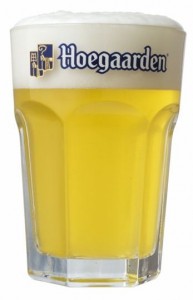 After considering the plethora of brawny beer varieties available to us during this festive season, it is sometimes nice to step back and revisit some sessionable summery favorites. Despite the frozen conditions outside your window that seem to immediately beckon an imperial stout, barleywine, or strong ale, there is still room for a much welcomed witbier.
After considering the plethora of brawny beer varieties available to us during this festive season, it is sometimes nice to step back and revisit some sessionable summery favorites. Despite the frozen conditions outside your window that seem to immediately beckon an imperial stout, barleywine, or strong ale, there is still room for a much welcomed witbier.
Typically featuring the spice of coriander and the zest of orange peel, a white beer, also commonly known around the world as Witte, witbier or biere blanche, is a top-fermented (ale) beer made famous by the Belgians, and also loved in the Netherlands and is now quite popular in North America. The name comes from the suspended yeast and wheat proteins visible in this hazy beer that is almost white in color when chilled.
 The witbier is a modern incarnation of Medieval hopless gruits (name refers to a blend of spices and herbs), flavored with an assortment of spices. Low alpha hops like Saaz, Sterian, and Kent Goldings are often the choice varietals employed by brewers of the style. A tinge of lactic acid in the beer gives it a subtle sourness that aids in making the relatively low-alcohol beer quite quenching, especially in the the hot summer months.
The witbier is a modern incarnation of Medieval hopless gruits (name refers to a blend of spices and herbs), flavored with an assortment of spices. Low alpha hops like Saaz, Sterian, and Kent Goldings are often the choice varietals employed by brewers of the style. A tinge of lactic acid in the beer gives it a subtle sourness that aids in making the relatively low-alcohol beer quite quenching, especially in the the hot summer months.
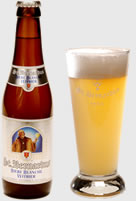 The evolution of the American craft beer drinker’s palate has called for more interest in brews like the Witte and other Belgian specialties. Undoubtedly the most recognized witbier is Hoegaarden, with its unique history that saw it travel from Belgium to Texas to Michigan.
The evolution of the American craft beer drinker’s palate has called for more interest in brews like the Witte and other Belgian specialties. Undoubtedly the most recognized witbier is Hoegaarden, with its unique history that saw it travel from Belgium to Texas to Michigan.

Hoegaarden Witbier: Known by many as the Original Witbier, this beer has been around since the Middle Ages in the Belgian village of the same name. In Hoegaarden, the last local witbier brewery, Tomsin, closed in 1955. About a decade later, a local milkman Pierre Celis, decided to rejuvenate the style in a small setup in his hay barn. Using traditional ingredients, Celis grew his operation into the 1980s, when he purchased Hougardia, a local soda factory that he converted into a brewery. After a fire that destroyed his facility in 1985, Celis rebuilt his operation with loans from the large corporation Interbrew. Celis felt pressure to compromise his recipes for mass marketing appeal. Interbrew viewed Celis’ approach as an inconsistent means of production and not as financially viable as it could be. At this point, Celis sold Interbrew the company and moved to Austin, Texas to continue brewing what he deemed as the original Hoegaarden 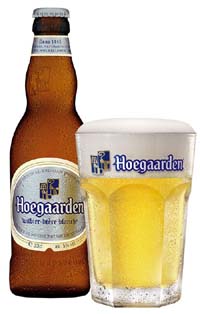 recipe.
recipe. 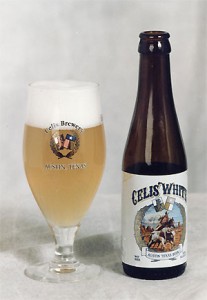 In 2005, InBev announced the Hoegaarden brewery would close the next year and move production to InBev’s larger Jupille location. This was obviously to the dismay of several locals. Afterall, the brewery was a symbol of the town’s culture, as well as being its largest employer. The move never worked out, and in 2007 InBev invest 60 million Euro to upgrade the original facility. Celis, on the other hand,never became a permanent resident of Texas, and sold his new company to MillerCoors who later sold the company, equipment, and brand names to Michigan Brewing Company in Webberville, Michigan, where the beer is still being made today. The “original” Hoegaarden recipe continued in Belgium under Brouwerij De Smedt and later by Brouwerij van Steenberge. Today this beer is still being produced in Belgium.
In 2005, InBev announced the Hoegaarden brewery would close the next year and move production to InBev’s larger Jupille location. This was obviously to the dismay of several locals. Afterall, the brewery was a symbol of the town’s culture, as well as being its largest employer. The move never worked out, and in 2007 InBev invest 60 million Euro to upgrade the original facility. Celis, on the other hand,never became a permanent resident of Texas, and sold his new company to MillerCoors who later sold the company, equipment, and brand names to Michigan Brewing Company in Webberville, Michigan, where the beer is still being made today. The “original” Hoegaarden recipe continued in Belgium under Brouwerij De Smedt and later by Brouwerij van Steenberge. Today this beer is still being produced in Belgium.
Today, other witbieren modeled with similar recipes, exist and captivate the interest of beer drinkers around the world.
A great reference regarding White Ales can be found on Martin Lodahl’s Brewing Techniques column.

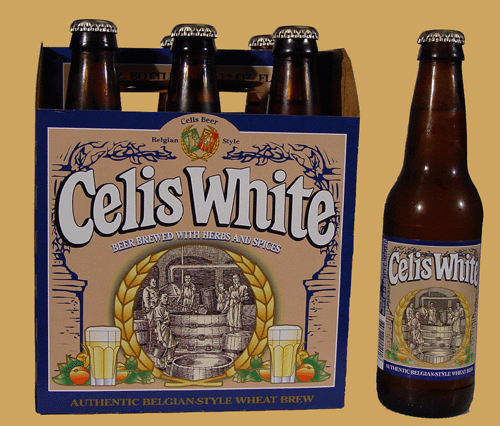

Thanks for sharing some White/Wheat ale love. They’re not styles I visit often these days, but beers like Hoegaarden, and Franzikaner(spelling?) Hefe-Weizen are brews that got me thinking about beer more than a substance to alter my state.
And even though you are talking about Belgian’s here, sometimes I think a German Wheat ale offers a decent hardiness for the winter.
Merry Christmas to my friends at Brewpublic. May you have a wonderful 2009, that includes a lot of good brews.
Best,
Phil & Sue Whiting
Philadelphia PA